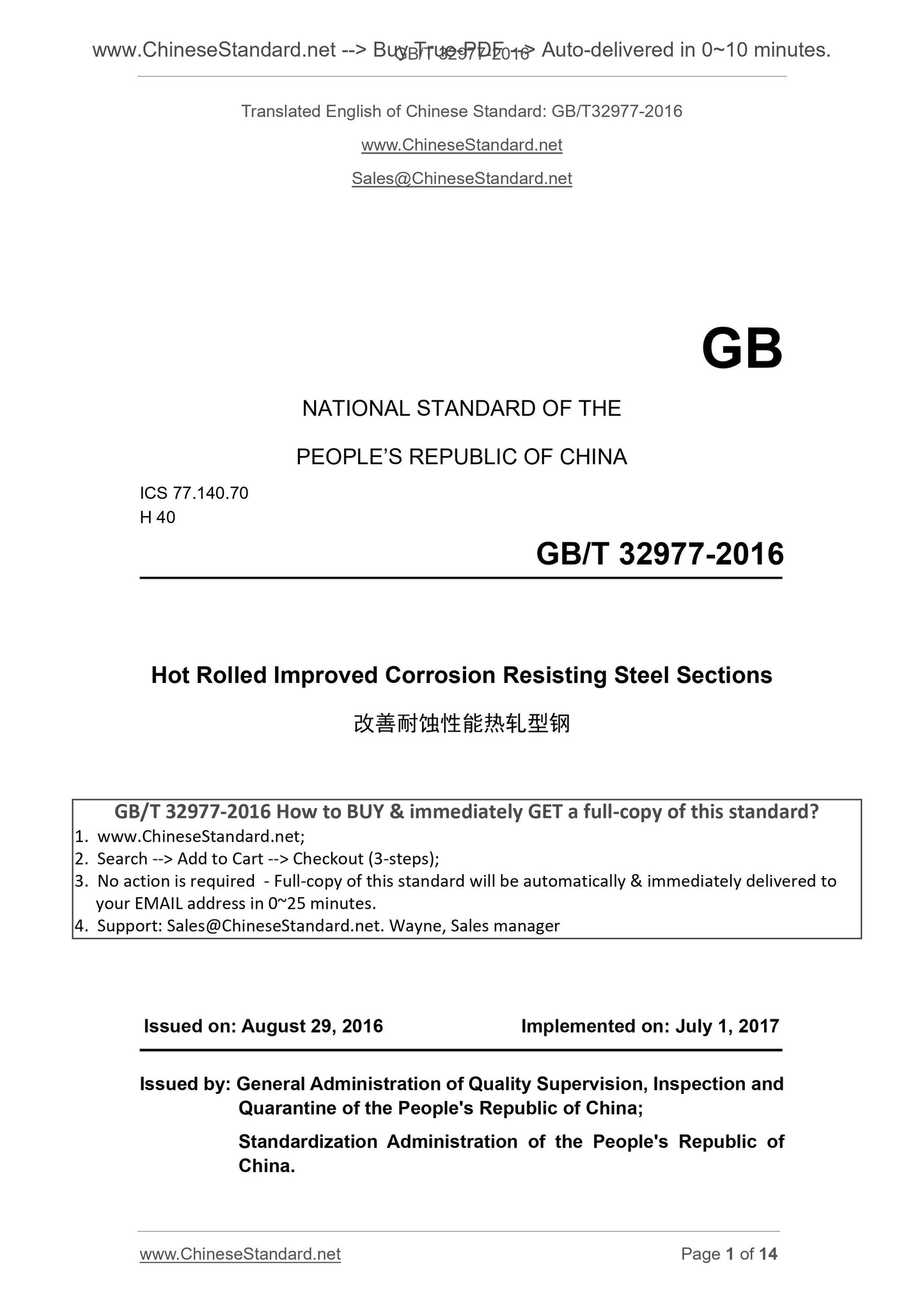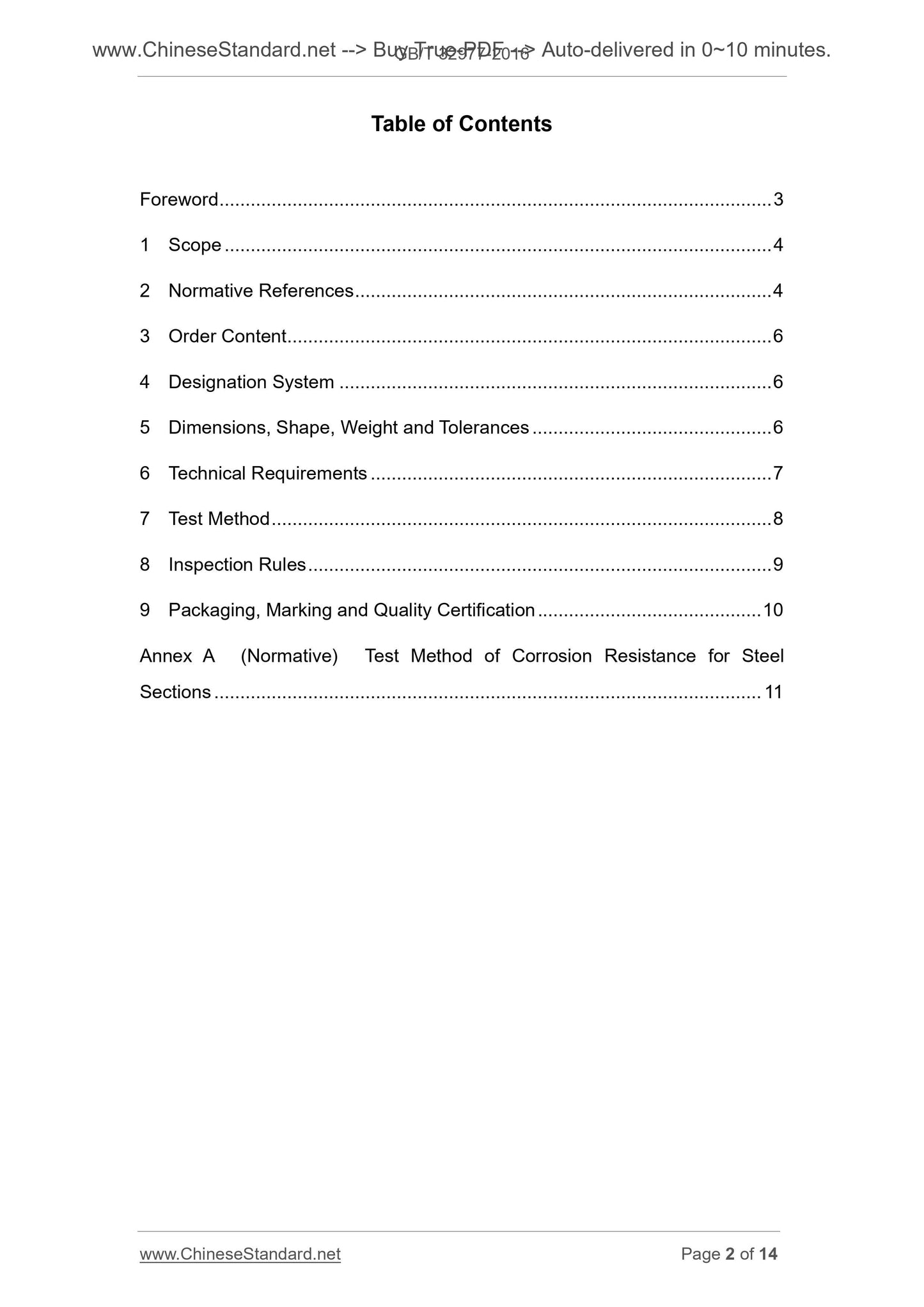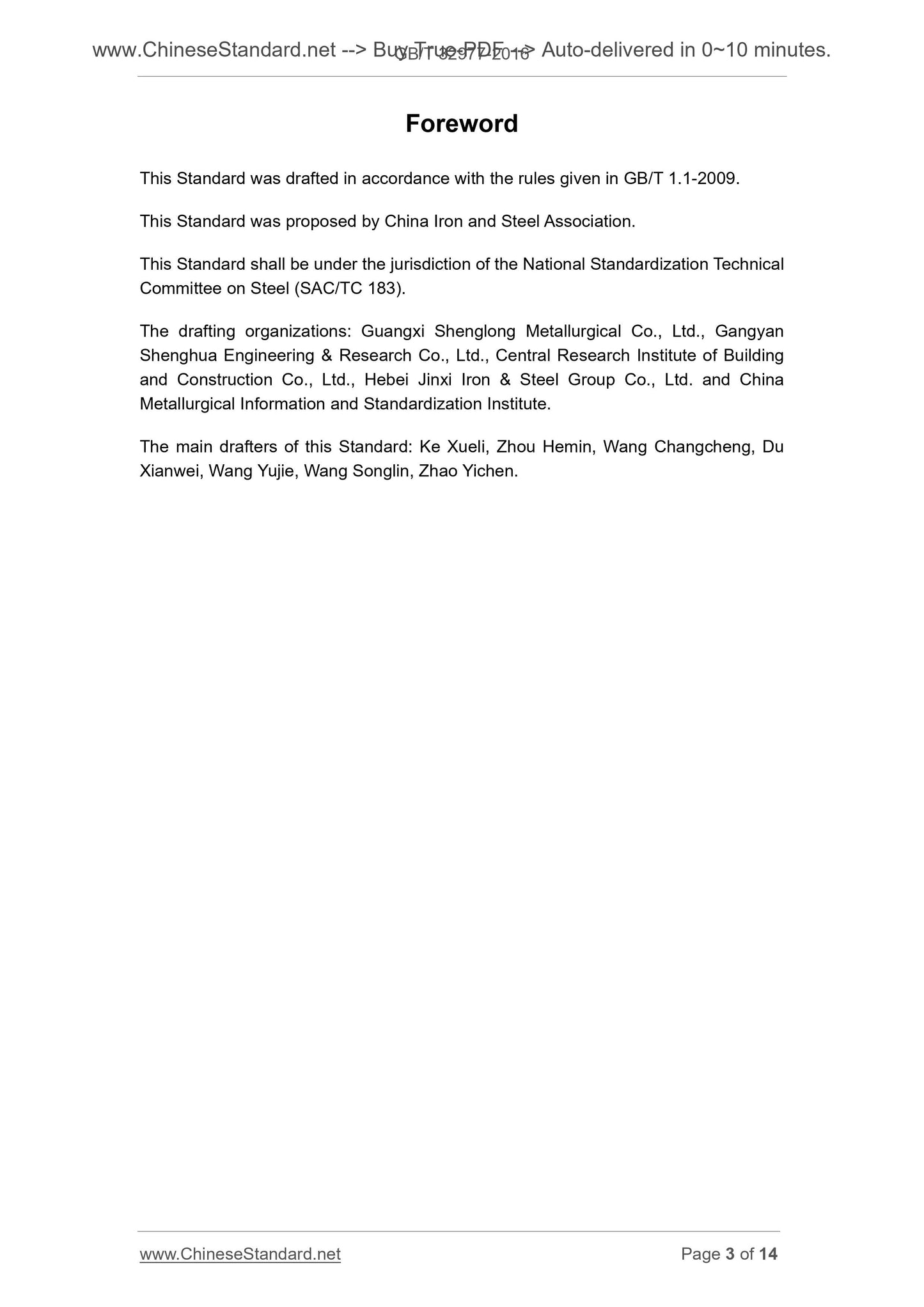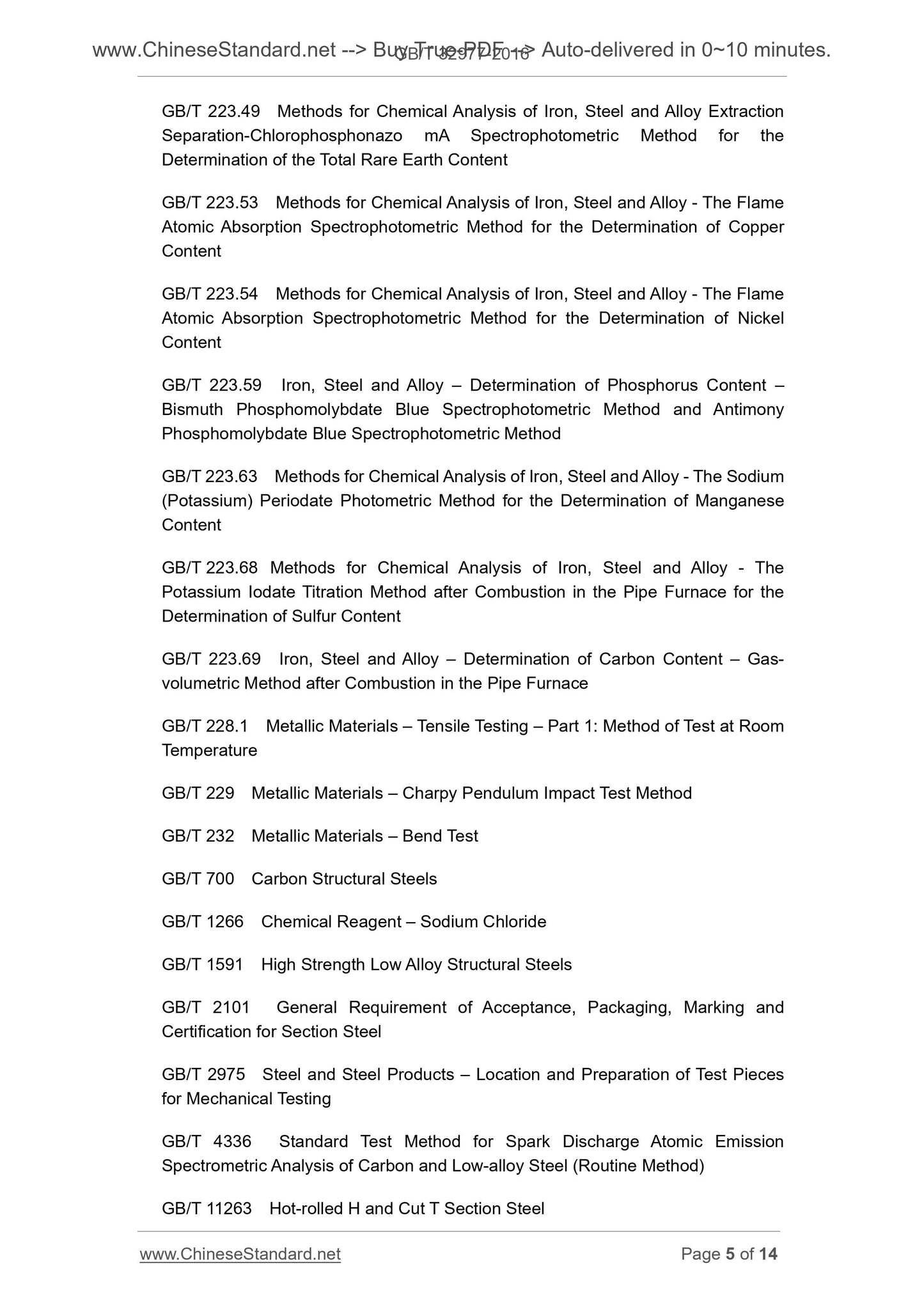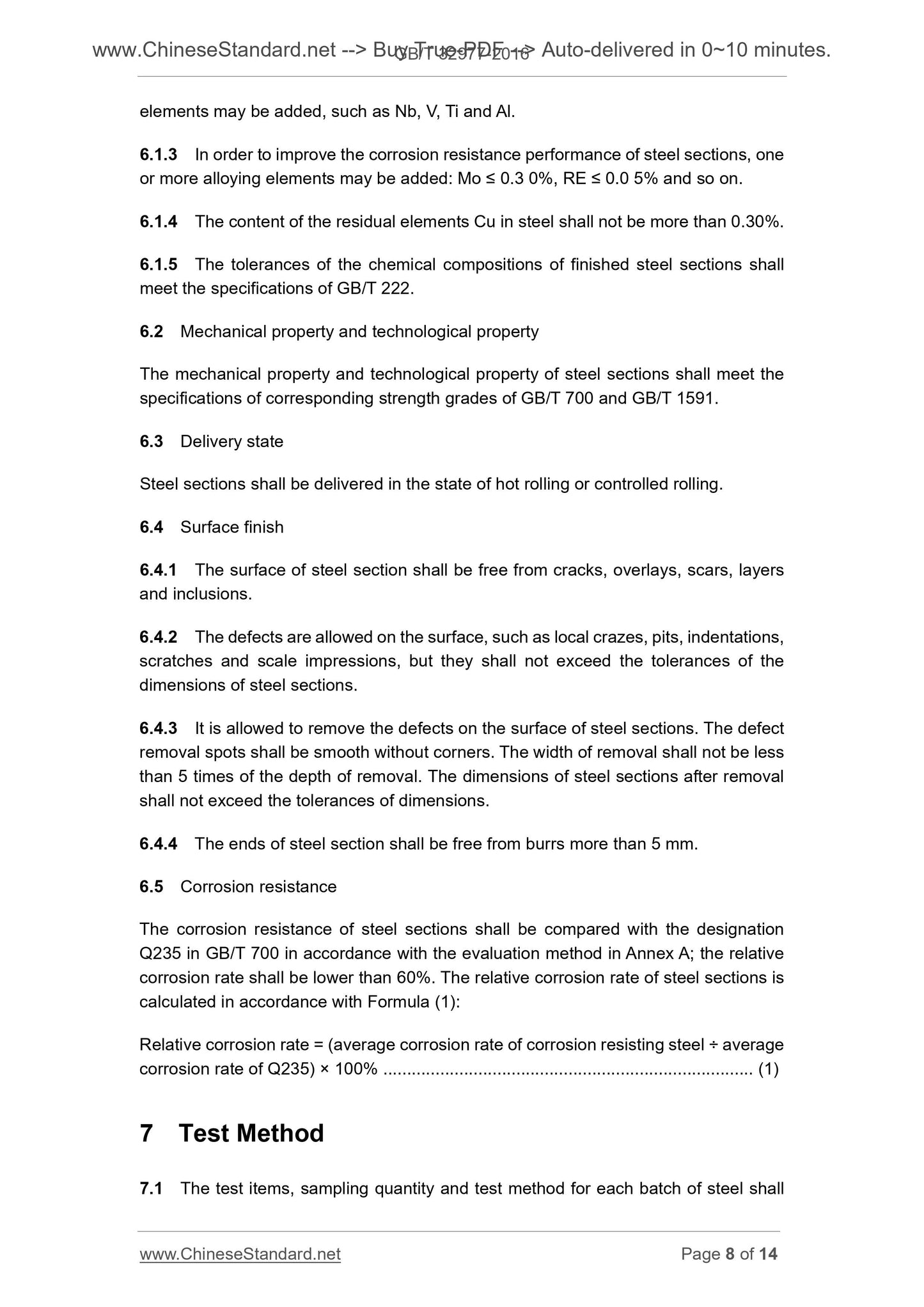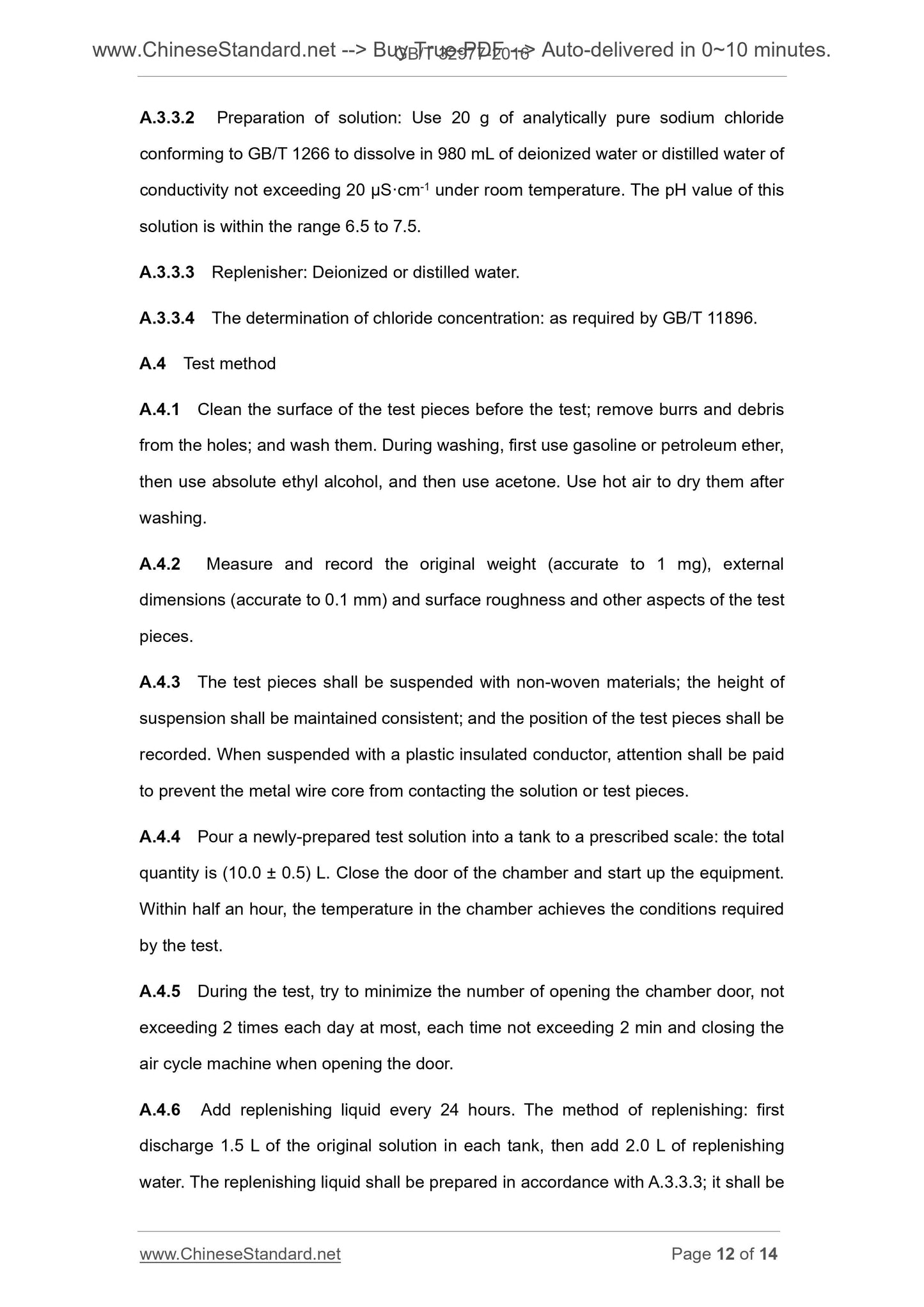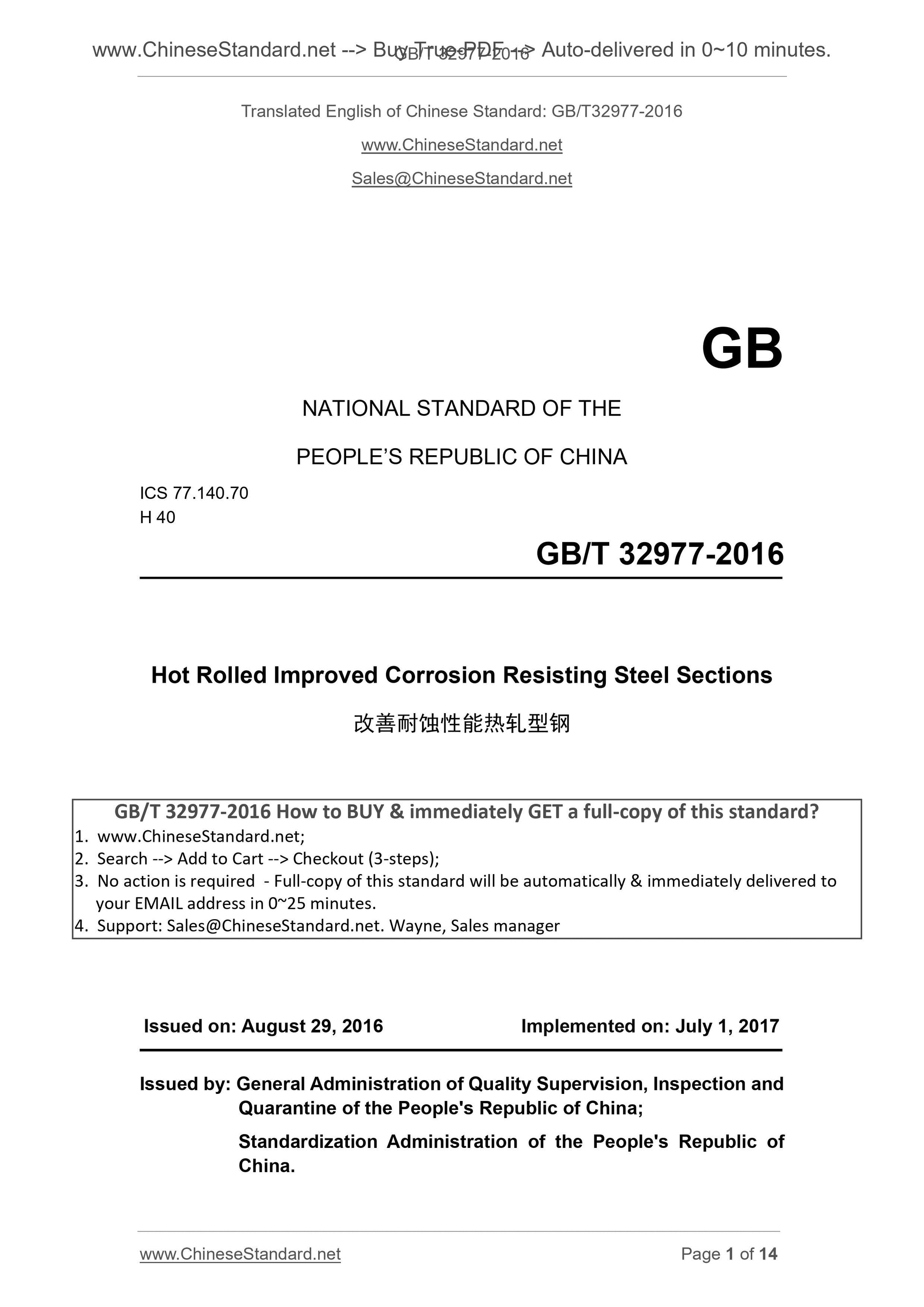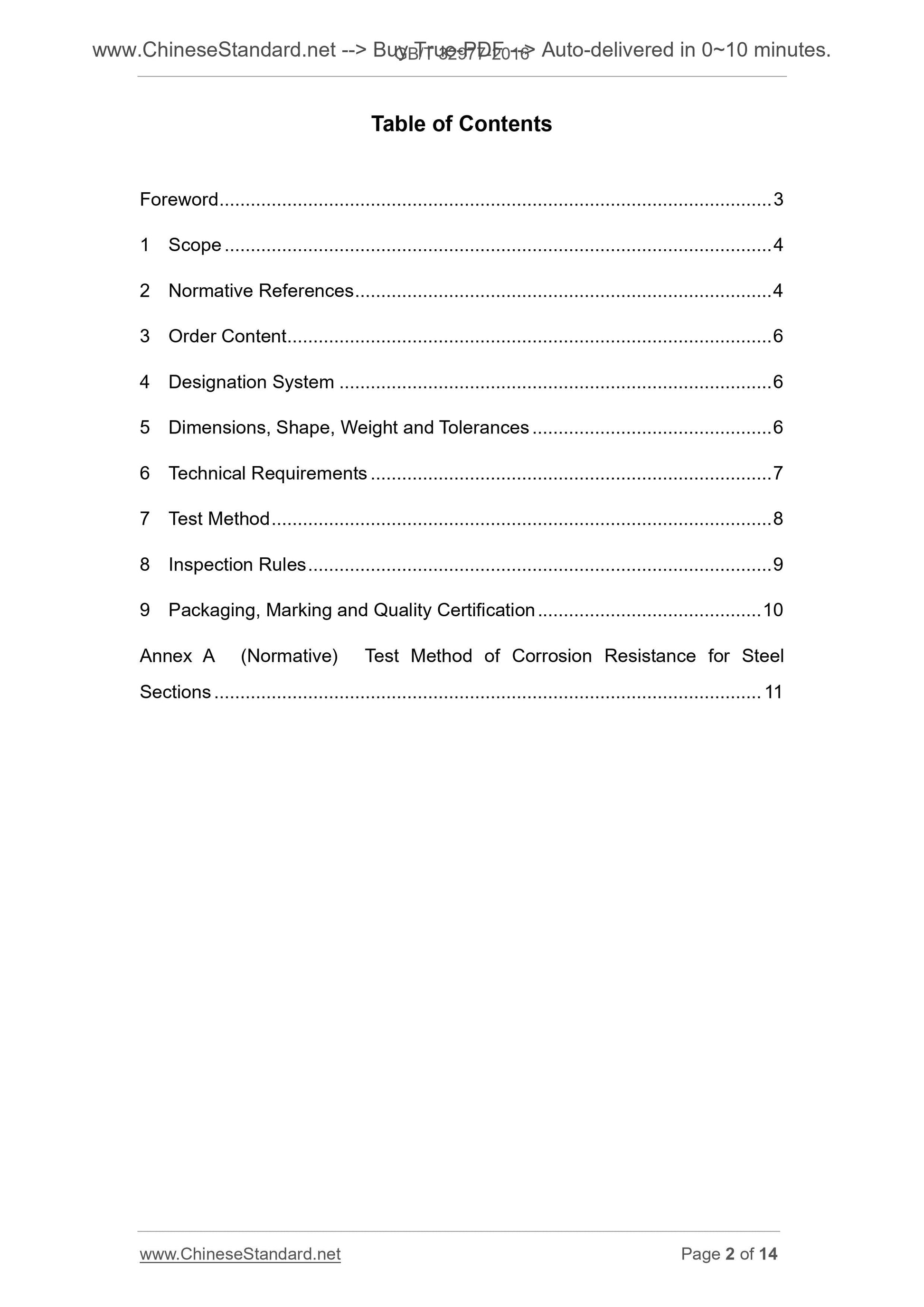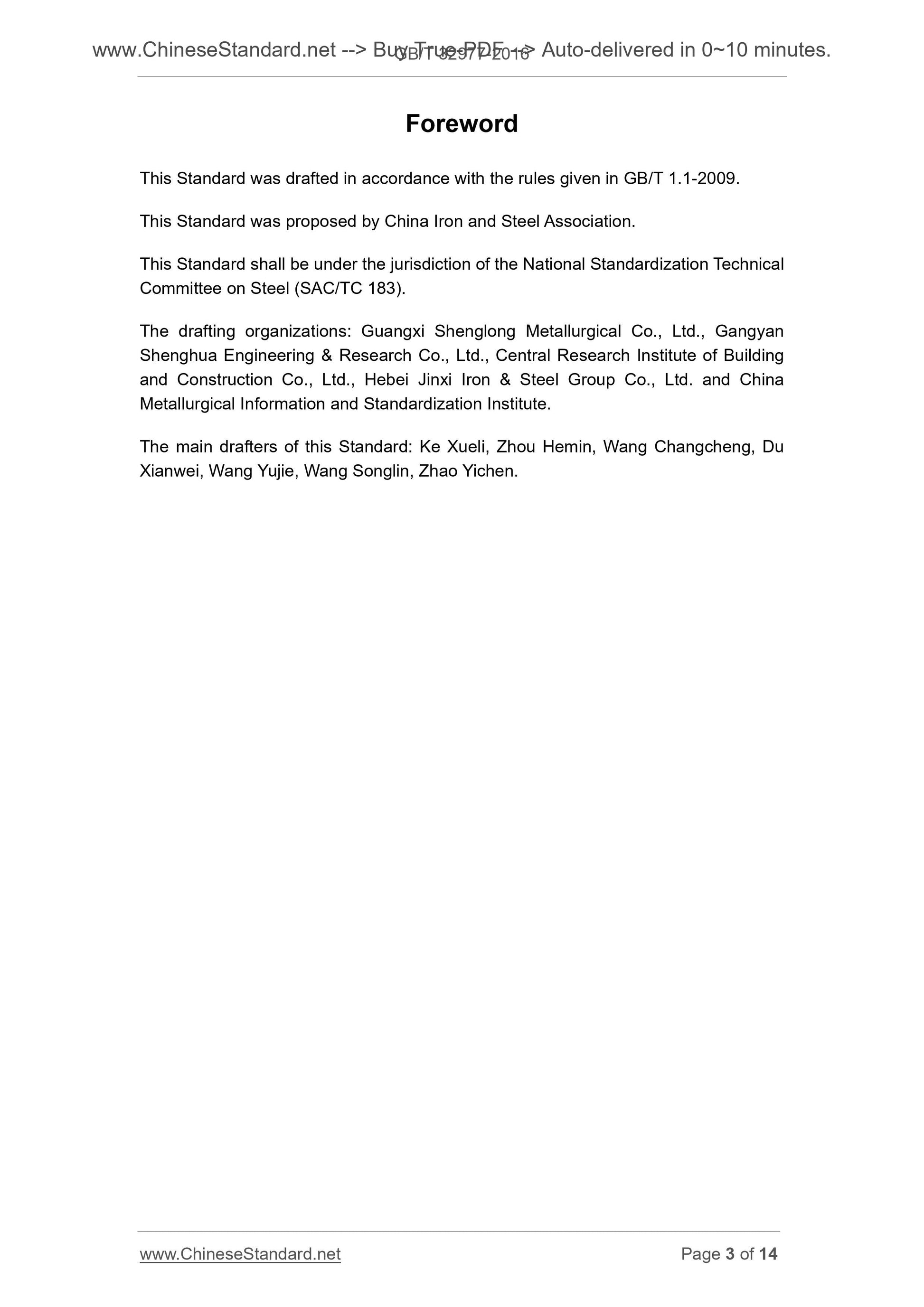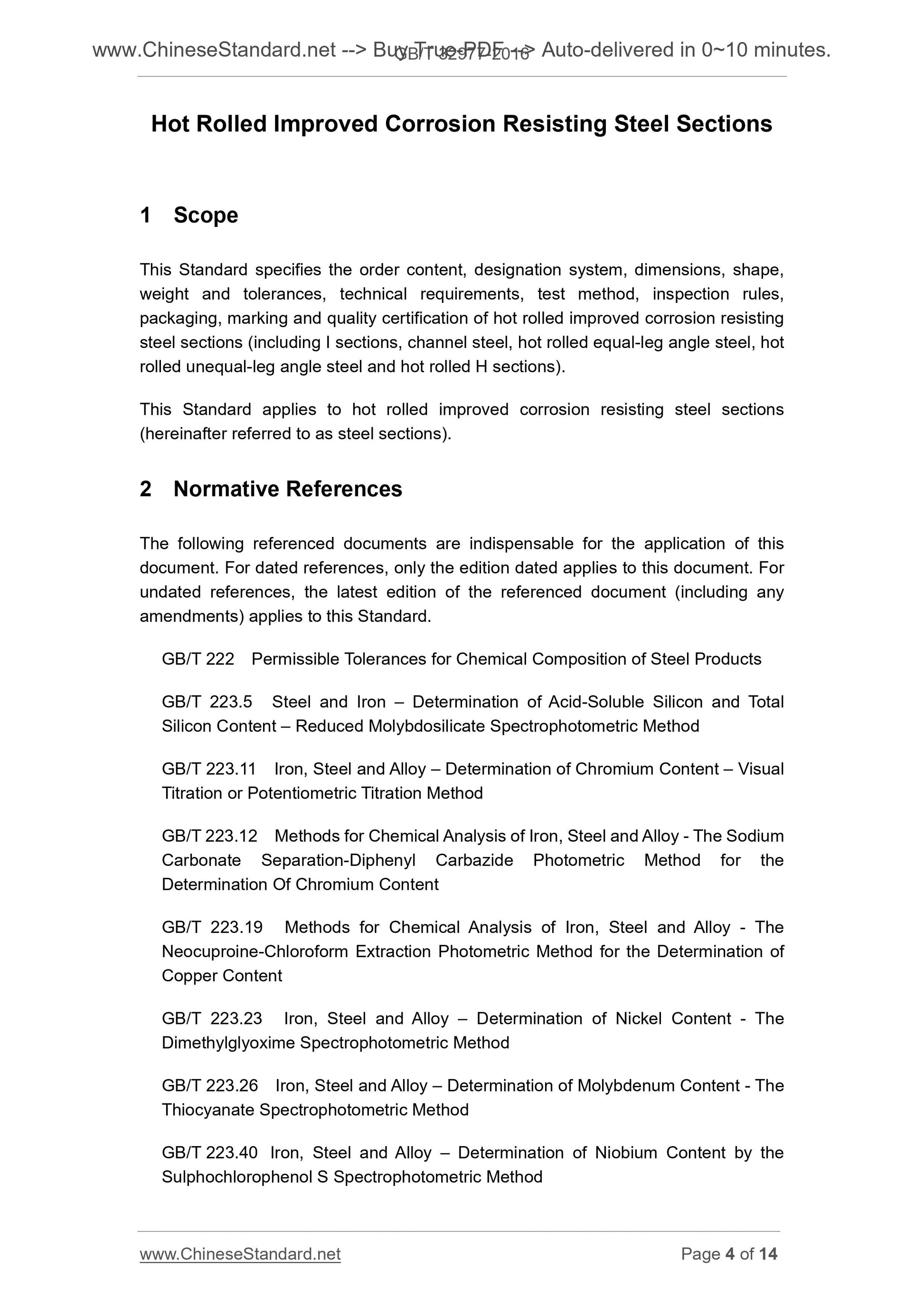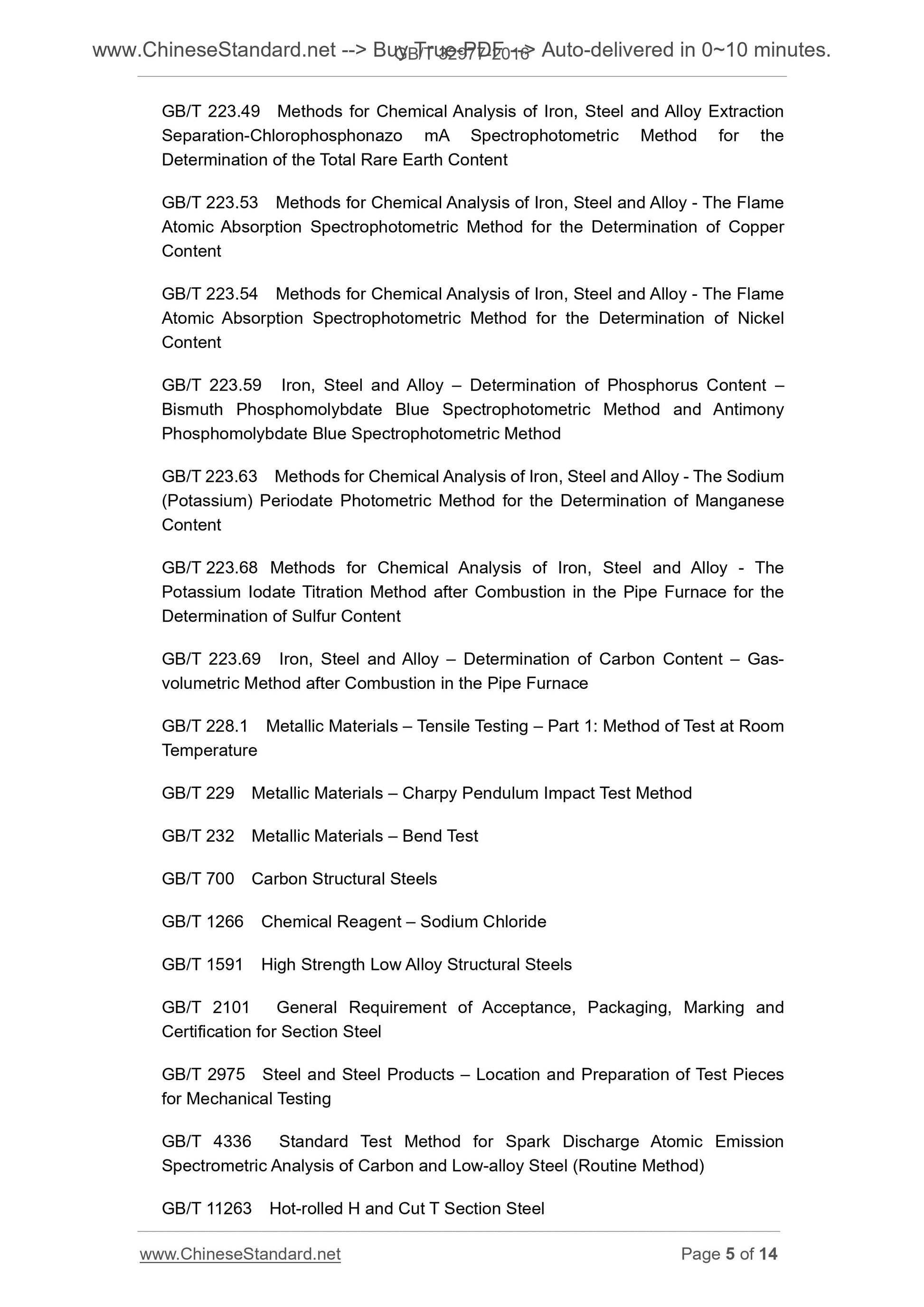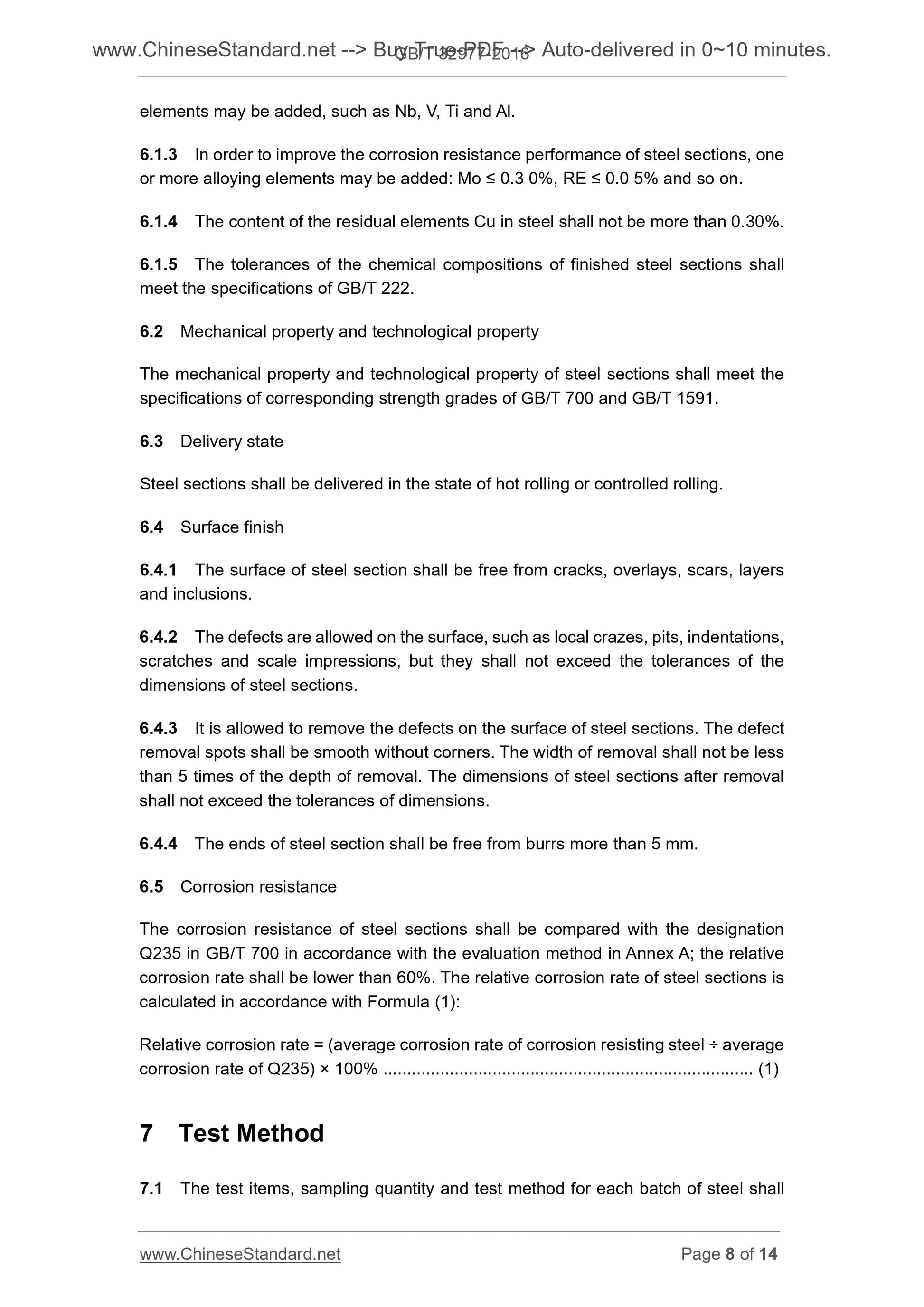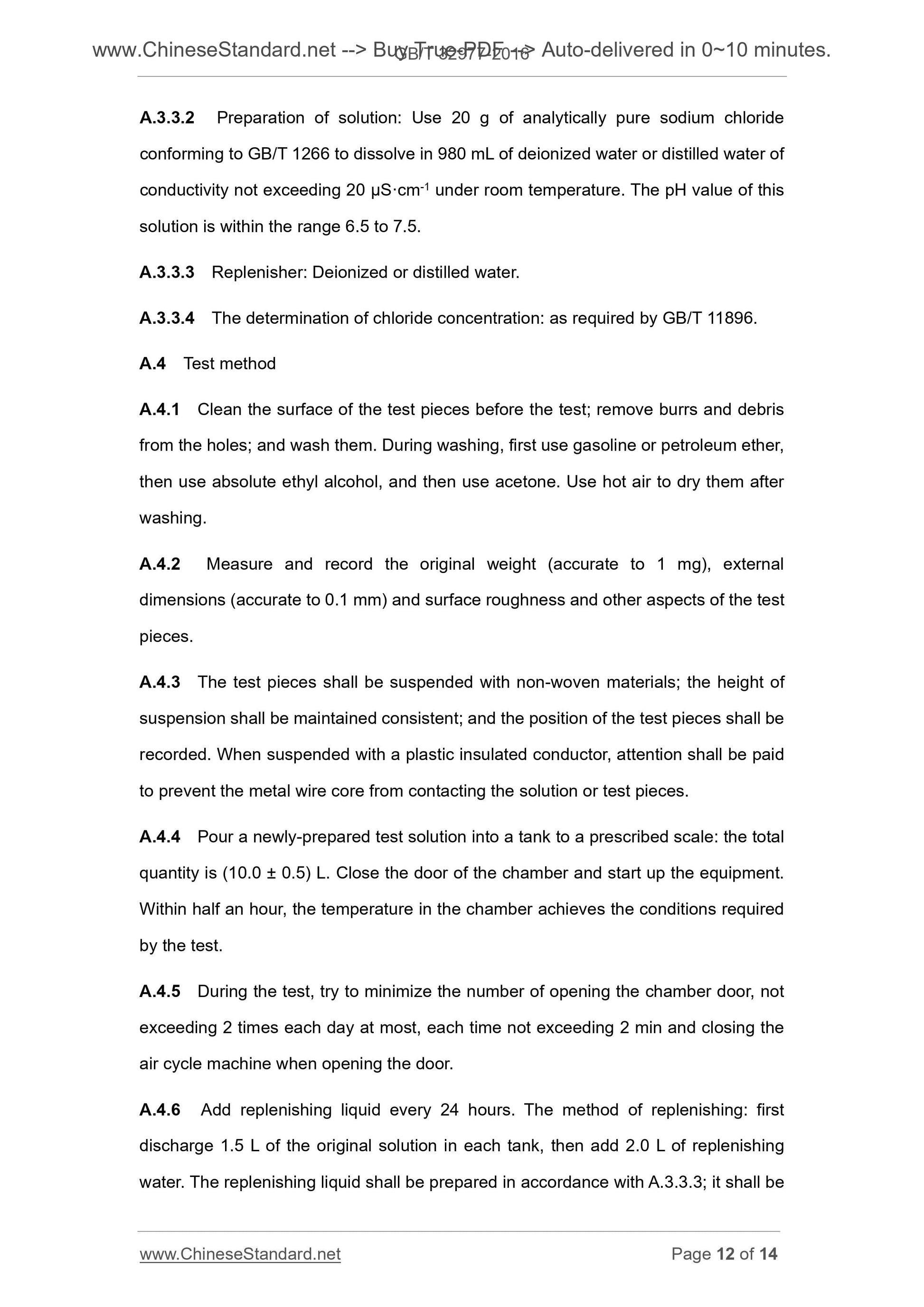1
/
of
7
www.ChineseStandard.us -- Field Test Asia Pte. Ltd.
GB/T 32977-2016 English PDF (GB/T32977-2016)
GB/T 32977-2016 English PDF (GB/T32977-2016)
Regular price
$90.00
Regular price
Sale price
$90.00
Unit price
/
per
Shipping calculated at checkout.
Couldn't load pickup availability
GB/T 32977-2016: Hot Rolled Improved Corrosion Resisting Steel Sections
Delivery: 9 seconds. Download (and Email) true-PDF + Invoice.Get Quotation: Click GB/T 32977-2016 (Self-service in 1-minute)
Newer / historical versions: GB/T 32977-2016
Preview True-PDF
Scope
This Standard specifies the order content, designation system, dimensions, shape,weight and tolerances, technical requirements, test method, inspection rules,
packaging, marking and quality certification of hot rolled improved corrosion resisting
steel sections (including I sections, channel steel, hot rolled equal-leg angle steel, hot
rolled unequal-leg angle steel and hot rolled H sections).
This Standard applies to hot rolled improved corrosion resisting steel sections
(hereinafter referred to as steel sections).
Basic Data
| Standard ID | GB/T 32977-2016 (GB/T32977-2016) |
| Description (Translated English) | Hot Rolled Improved Corrosion Resisting Steel Sections |
| Sector / Industry | National Standard (Recommended) |
| Classification of Chinese Standard | H40 |
| Classification of International Standard | 77.140.70 |
| Word Count Estimation | 11,174 |
| Date of Issue | 2016-08-29 |
| Date of Implementation | 2017-07-01 |
| Regulation (derived from) | National Standard Announcement 2016 No.14 |
| Issuing agency(ies) | General Administration of Quality Supervision, Inspection and Quarantine of the People's Republic of China, Standardization Administration of the People's Republic of China |
Share
